| Zeitschrift Umělec 1998/1 >> Sensasion | Übersicht aller Ausgaben | ||||||||||||
|
|||||||||||||
SensasionZeitschrift Umělec 1998/101.01.1998 David Cohen | exhibition | en cs |
|||||||||||||
|
Virginia Woolf made the improbable claim about the exhibition Manet and the Post Impressionists, curated at the beginning of this century by her friend Roger Fry, that human nature changed “in and around December 1910.“ If she had been writing about the Sensation show at the Royal Academy, which highlights “young“ British Art from the Saatchi Collection, she would also have pulled out the stops of hyperbole. For once the cliché, “it’s the show on everyone’s lips,“ is actually true: every non-art-world friend or acquaintance wants to know what I think about it and tells me they are on their way to see for themselves.
I guess that’s why its called Sensation. The official explanation is that some of the key artists (notably Damien Hirst and Marc Quinn) are mad about Bacon, who once said, paraphrasing Valery, that “what modern man wants is the grin without the cat, the sensation without the boredom of its conveyance.“ According to the catalogue acknowledgments, the title came up in a discussion with New York gallerist Jeffery Deitch, who also organized the simulationist extravaganza Post Human. That boy certainly knows how to title. The show has also proved a sensation in the tabloid sense. Just as the Armory Show of 1913 had its Nude Descending a Staircase to keep the press busy, the talking point of Sensation is a four-meter-high painting of Britain’s most hated child murderer, Myra Hindley. In the early 1960‘s, Hindley carried out the notorious Moors Murders in Yorkshire with her accomplice, Ian Brady, kidnapping and torturing children, tape-recording their death cries, and burying them in secret (still undiscovered) graves. The artist Marcus Harvey has now made a blow-up copy of the ubiquitous police mug shot of Hindley, a mesmerizingly sinister picture, which - if you look closely - boasts a sickly poignant detail. In the manner of Chuck Close, each pixel is represented in black, white or gray, only rather than painting these marks Harvey has printed the paint onto the canvas with a clay cast of a child’s hand. It’s actually a rather impressive painting, and I say that as someone with a very low regard for his previous work, pornographic nudes done in an extravagantly painterly style that marries Guston, de Kooning and Morley with “bad painting“: real Brit Pop cool meets hot schlock. But Myra isn’t bad - esthetically at least. Morally, opinion is sharply divided. When the mother of one of Hindley’s victims pleaded for the work to be taken out and the Royal Academy board members voted to keep it in, three of their number resigned in protest and the director of a child charity called for a boycott. Needless to say, there are lines around the block! There’s plenty in Sensation that has nothing to do with sex and murder, but there’s rather a high quotient that does. Myra has some ghoulish bedfellows in the pickled creatures of Damien Hirst (there’s a shark, a pig, a sheep, a whole cow, not to mention a cow’s head, although the latter isn’t in formaldehyde - that would have been cruel to the flies!), plus the amputated shop mannequins in the Chapman brothers transcription from Goya’s Desastres de la Guerra, Matt Collishaw’s blow-up photo of a bullet hole in a man’s head, Marc Quinn’s self-portrait bust in his own blood, and some porn lifted from the pages of the Sunday Sport (Britain’s answer to the National Enquirer) in the prurient tableaux of Sarah Lucas. Hot stuff. But the central quality of this Brit Pop art - or of the YBAs, as the generation of late 80‘s neo-conceptualists who have stolen the scene in London are now officially to be called - is coolness. Abjection on ice. Whether its art about art, or art that goes for the jugular on issues of sex or death, the defining features of this cool-school are its nihilism, nonchalance and impersonality. Alex Katz, the veteran American realist who like the YBAs enjoys the patronage of Charles Saatchi, once claimed, “I’m doing something hot in a cool way.“ Despite the refinement and subtlety that are his hallmarks, not to mention his humanity and reverence for tradition, Katz is held in a curious reverence among some of Britain’s neo-avant-garde. But there is also something undeniably British about the YBAs. As someone who holds their efforts in generally low regard, I’m coming to realize it’s what makes them so successful abroad: their unique “attitude“ arises from a fusion of the loutish and the aloof which is a national trait, being at once smarmy, eccentric, sarcastic and laddish. Saatchi’s tastes are far too eclectic to make any meaningful deductions about a sensibility rooted in advertising. In his time he has gone for such contrastive art as blue chip American Minimalism (when his ex-wife Doris Lockheart was around) and sweaty, earnest School of London realism (more his own taste at the time), New York romantic postmodernism (Schnabel, Clemente) and stiff-upper-lip British object-based sculpture of the Lisson Gallery stable. But still, it’s hard not to think that the whole YBA phenomenon was waiting for him. It’s not just a matter of Hirst’s Thatcherite entrepreneurship, organizing shows of his generation before they had even graduated their South London art school, Goldsmiths’, sending taxis to the great and the good to ensure their attendance. (However Saatchi got there, transport wise, he “got there“ in terms of being financially empowered to buy up YBAs by the show-load by handling the account of the Conservative Party). The affinity runs still deeper between the art movement that was all about taking on the system and the adman who did so much to shape it. Brit Pop art is so much about packaging, about instantaneous recognition, wry amusement, knowing reference to media images and recent avant-gardist art alike. Just like advertising, it’s ephemeral, cannibalistic, hedonistic. As one would expect from art that is all about statement and style, collected and even installed by the world’s leading advertising executive, Sensation looks pretty swank, although it was a crowded hang. And of course, once one gets over the “freak show“ aspect, it is clear that there is a range of sensibilities here that belies neat generalizations. Rachel Whiteread’s Ghost - a solid concrete cast of the negative space in a living room - is unquestionably the most resolved, substantial and satisfying use so far of the single idea that defines her career (more dynamic and contained than her better known, destroyed commission, House). As if not intrinsically odd enough, Ghost took on a new incongruity in the august surroundings of Burlington House, with its ornate ceiling decorations: the room Whiteread had cast was suitably nondescript and dour, matching her vision. More to the point, displayed in the company of Richard Billingham’s large color photographs of a dysfunctional couple in their squalid proletarian dwelling (the artist’s parents at home), the sculpture assumed a new sociological resonance. Another artist undaunted at unsentimental display of his family is Ron Mueck, whose Dead Dad is a silicone and acrylic Duane Hanson-like realist mannequin of his recently deceased father, naked and spread out like Holbein’s dead Christ. The twist in this genuinely shocking (and actually quite moving) piece is that the figure is shrunk to approximately one-third life size. In contrast, Gillian Wearing’s video of a midget taking a bath is simply prurient, “sensationalist“ and - if you can take another pun - wearing on one’s patience. Naturally, there is plenty more “body art“ (this is the 90‘s!) with the highest quotient of flesh coming from Jenny Saville, who paints obese women after the style of Lucian Freud and then proceeds to inscribe things into the painted flesh. In one piece it’s liposuction lines, in the next a feminist text written in mirror writing. This latter was originally supposed to have a mirror facing it, so that one could read the text if looked at in the reflection, but not if you wanted to gaze at the paint “in the flesh,“ a thought-provoking choice to leave with the viewer. But against the artist’s wishes, Saatchi discarded the mirror after he bought the piece. (As she now paints under direct contract to the collector, Saville can’t have been overly distraught at this subversion of her authorial independence, which seems odd for a feminist painter concerned with control and the gender problematics of paint.) When Sensation artists really get going with sex the results can be pretty dire. Tracy Emin, for instance, sews the names of Everyone I Have Ever Slept With 1963-1995 into the inside of a camping tent, along with some interminable gibberish texts about her unremarkable childhood in a South Coast town of Margate. Her friend Sarah Lucas (with whom she once ran a thrift shop in East London) goes one better, arranging on a mattress two melons and a bucket on one side and a cucumber and two oranges on the other, to suggest the reproductive organs of the respective sexes. In contrast to such forgettable drivel, a sculpture by Jane Simpson of a rather voluptuous dressing table, covered in gesso, with red lipstick-like marks rubbed here and there, and with a refrigeration unit set into the furniture filled with gently steaming ice is subtle, suggestive, intriguing. The problem is that the tone for the show is set by the nonentities, which leaves the likes of Simpson with her ice box out in the cold. Most of the rest is decidedly chilly art about art, smarmy, referential and soulless. There are rather too many one-liner jokes that are often unfunny. Simon Patterson takes the familiar map of London’s Underground (actually a classic of 1930‘s graphic design) and replaces the tube stop names with arbitrary lists of historic personages or current celebrities. Glenn Brown does meticulously flat, brushless copies of other modern artists, of a bravura painterly Frank Auerbach for instance, or a Dalí - a familiar trope of postmodern appropriation, so familiar it is no doubt troping the trope. Gavin Turk has a waxwork of himself dressed as Sid Vicious (the punk singer) posing as Elvis as painted by Warhol. Wow! But then what do you do, once you’ve had the “sensation“ of these recognitions? Funnier, and more satisfying because there’s something to do with it once you have got the joke, is Keith Coventry’s all-white painting in the style of Robert Ryman which, on closer inspection, is actually a realist depiction, after a photograph, of a former Tate Gallery director explaining modern art to the Queen. Then, mixed in with these referentialists (whether they reference themselves, their libido, or other art is ultimately academic) are a few painters actually concerned with paint, and with such old fashioned formal issues as light, texture, optical effect. Of course, they blend in with the art-about-art people (Gary Hume with his paintings of doors on doors in door-paint for instance) but at the same time, they stand as a race apart. Simon Callery’s bands of thin, close vertical lines are luminous and graceful in an Agnes Martin sort of way, while Mark Francis’s arbitrary array of pulsating black balls against a white ground can be seductive and intriguing. What do they have in common with pickled sharks, embroidered tents and dismembered mannequins? Why are they here? Just because of their age, passport, and Charles Saatchi’s checkbook? There are other painters (even young and British, but not in the Saatchi Collection) in whose company they would make more sense, precisely because the viewer’s vital sense - sight - will not have been blunted by the dazzle of mere sensation. Sensation at the Royal Academy, London, Sept.17-Dec. 28, 1997. David Cohen is a London-based art historian and writer. Reprinted with permission from the ArtNet (http://www.artnet.com).
01.01.1998
Empfohlene Artikel
|
|||||||||||||
|
04.02.2020 10:17
Letošní 50. ročník Art Basel přilákal celkem 93 000 návštěvníků a sběratelů z 80 zemí světa. 290 prémiových galerií představilo umělecká díla od počátku 20. století až po současnost. Hlavní sektor přehlídky, tradičně v prvním patře výstavního prostoru, představil 232 předních galerií z celého světa nabízející umění nejvyšší kvality. Veletrh ukázal vzestupný trend prodeje prostřednictvím galerií jak soukromým sbírkám, tak i institucím. Kromě hlavního veletrhu stály za návštěvu i ty přidružené: Volta, Liste a Photo Basel, k tomu doprovodné programy a výstavy v místních institucích, které kvalitou daleko přesahují hranice města tj. Kunsthalle Basel, Kunstmuseum, Tinguely muzeum nebo Fondation Beyeler.
|



















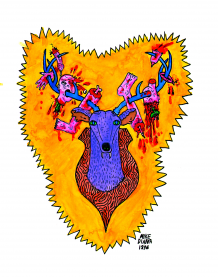




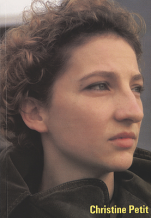
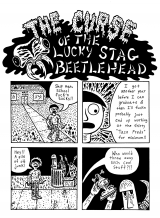
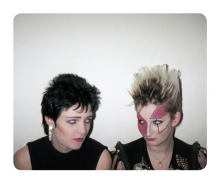
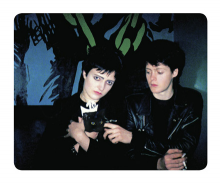


 New book by I.M.Jirous in English at our online bookshop.
New book by I.M.Jirous in English at our online bookshop.
Kommentar
Der Artikel ist bisher nicht kommentiert wordenNeuen Kommentar einfügen